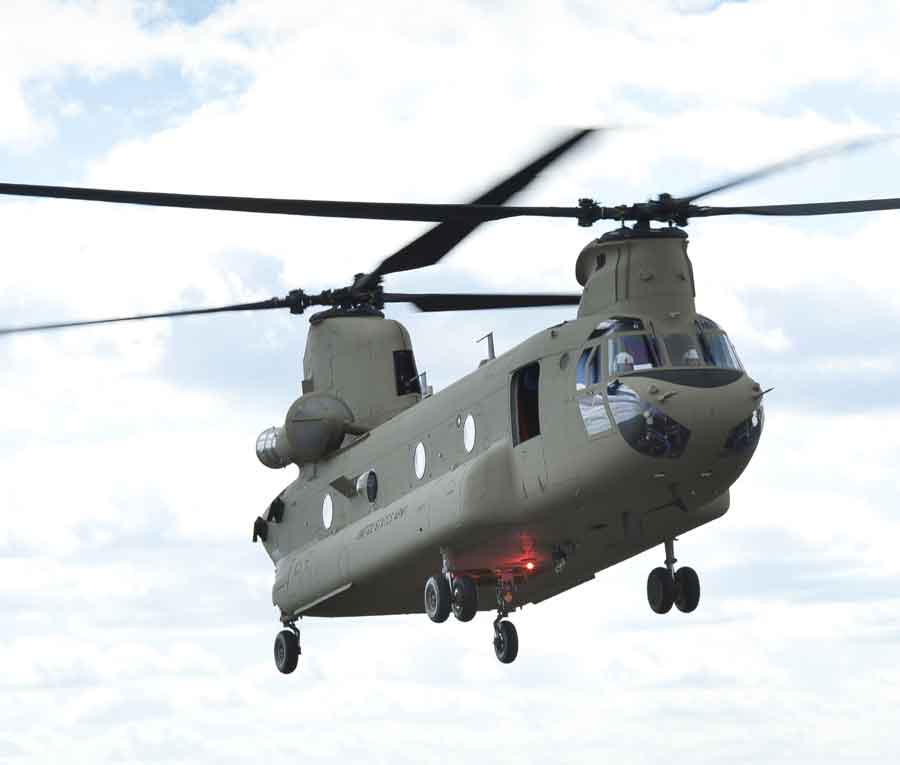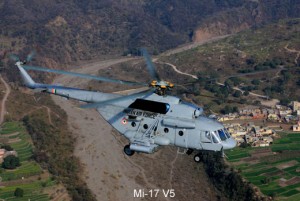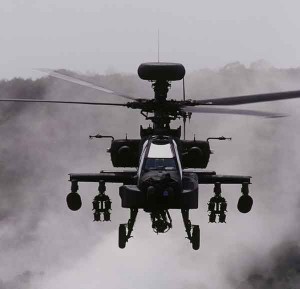While jet fighters are in their fifth generation, helicopters are still languishing with the same old airframes for the last several decades, with mostly upgrades to their credit. The APACHE AH-64E Block-III is a vivid example of the same even though 26 new technologies have been incorporated in the upgraded version. However, the new generation helicopter platforms are now featuring the latest advances in aeronautics giving military helicopters improved flight performance as well as weapon systems with incremental technological and technical upgrades. This offers the new generation machines unprecedented capabilities – lighter and stronger materials of construction, increased autonomy, more powerful engines, reduced acoustic signatures, more accurate navigation systems, enhanced data acquisition and protection systems, and more effective weapons and munitions. Designed as weapon systems integrating multiple functions, helicopters will have to become truly modular, making it possible to change part of the system without affecting overall integrity. The concept of modularity is likely to increase, especially with the emergence of multi-role machines.
A number of countries are today looking at acquiring MRH due to the changing nature of conflict…
The combat helicopters can be classified into two categories -the armed helicopters/gunships and the modern day dedicated Attack Helicopters (AH). Both are military helicopters, wherein the armed helicopters are normal utility, cargo or reconnaissance modified with weapon mounts for defence against and attacking targets on the ground. The purpose of modification could be field expediency during combat as well as the need to maintain helicopters for missions that do not require weapons. In fact, these are basically the Multi Role Helicopters (MRH) which can transport troops as well as carry basic armaments in terms of machine guns/rockets/missiles depending on the type of mission required to be undertaken.
The AH, on the other hand, is specifically designed and built to carry weapons for engaging targets on ground and air with special emphasis on anti-tank role. The weapons include machine guns, cannons, rockets and guided missiles for air-to-ground and air-to-air engagement. Modern day AH have two main roles of providing direct and accurate close air support for ground troops – amply being demonstrated in Afghanistan and anti-tank role to destroy enemy armour. Specialised armed helicopters flying from ships at sea are equipped with weapons for anti-submarine and/or anti-shipping operations. A number of countries are today looking at acquiring MRH for their armed forces due to the changing nature of conflict, specially related to counter insurgency and counter terrorist operations. A befitting example is the employment of modified Black Hawks with stealth features successfully by the US Special Forces in Operation Neptune Spear (Geronimo) to take out Bin Laden from Pakistan.
The concept of combat helicopters evolved with the French during the Algerian and first Indo-China Wars (1954-1962) in the form of rotary wing platforms modified as armed helicopters. The first use of armed helicopters by USA in large-scale combat operations was in Vietnam. Till then, military helicopters were used for troop transport, observation and casualty evacuation. These helicopters while flying missions often came under heavy fire resulting in the need for arming them. The Huey UH-IC troop transporter was modified with stub wings attached to its fuselage and fitted with machine guns and rockets. The other helicopters modified as armed helicopters were the Sikorsky and Chinook CH-47. This was a quantum jump from the manned door-fitted machine guns of the earlier versions of armed helicopters.
A number of countries are today looking at acquiring MRH for their armed forces due to the changing nature of conflict…
During the 1960s, the Soviet Union also felt the need for armed helicopters and modified the military MI-8 troop transporter helicopter with weapon pods for rockets and machine guns. This subsequently led to the development of a dedicated armed helicopter/gunship – the MI-24 which saw action in Afghanistan during the 1980s. In our context, we had earlier MI-8 and Ranjeet (modified Cheetah helicopter), fitted with machine guns fired from side doors. Presently the MI-17 and Lancer (Cheetah) are modified for armed role capable of mounting guns and rockets. In fact the 80 X MI-17Vs now under acquisition from Russia, are already modified for armed role including fitment of missiles.
With the armed helicopter/gunship concept battle proven, began the development of dedicated AH with the primary aim of engaging tanks. The late 1970s/early 1980s saw the advent of the AH like the American Apache AH 64A and upgraded Huey Cobra, the Soviet MI-24 and the Italian A-129 Mangusta. While some questioned the relevance of dedicated AH due to increased cost over gun-ships, the 1991 Gulf War put these doubts at rest. Fleets of Apaches and Huey Cobras dominated Iraqi armour in the open desert during the war. In fact, the Apaches fired the first Hellfire missiles destroying early warning radars and SAM sites. The deep attack role and independent operations by AH did come into question after a failed mission during the attack on Karbala in the 2003 Gulf War but this was purely attributable to flawed tactical employment which was corrected in subsequent operations. The Soviet operations in Afghanistan from 1979 to 1989 saw the emergence of the MI-25/MI-35 AH, a variant of the MI-24. Closer home we have in our inventory the Russian MI-25/MI-35 AH, which is now vintage, though a certain amount of upgrading has been carried out to enhance their night operations capability. In fact, during the Kargil conflict in 1999, the Indian Army and Air Force felt the need for an AH that could operate at those heights with ease. This led to the development of the Light Combat Helicopter (LCH) which would be capable of operating at high altitudes.
Combat Helicopter Armament Systems
The most common weapons are machine guns and rockets for use against soft targets on the ground and for self defence while transporting troops over conflict areas. While armed helicopters have mostly used direct firing weapons with bombs considered more appropriate for fixed-wing aircraft, some armed helicopters have delivered heavy bombs successfully. The US army used the Chinook helicopters for dropping bombs to clear landing zones and saturate base camps and infiltration routes during the Vietnam War. Armed helicopters today can also be fitted with mine dispenser/mine clearance systems. The system is composed of racks on both sides of the helicopter for up to 40 canisters each containing six anti-tank and one anti-personnel mine. The rapid air-borne mine clearance system is another armament sub-system where the intended targets are naval mines. The system consists of a single modified 30mm cannon for targeting and neutralising mines in shallow waters and is fitted on the Black Hawk helicopters of the US Navy.
The advent of fire-and-forget missiles is the greatest asset of the AH which enhances its lethality.
On the other hand, the AH carries guns, rockets, air-to-ground as well as air-to-air guided missiles. The gun, normally a 20mm/30mm caliber weapon located in the chin of the helicopter, provides suppressive ground fire while the AH carries out its anti-tank mission. The unguided aerial rockets complement the short-range gun and the long-range anti-tank missiles. The rockets are cheap and effective as an area weapon. The rockets are also used to attack soft ground targets such as depots and anti-aircraft gun sites. In emergency situations they could also be used in the air-to-air role. Today, there are rockets with sub-munitions warheads that can disperse a number of grenades/bomblets over target areas.
The air-to-air missile system is basically to counter the threat from other AHs and is more of a defensive armament system. The anti-tank guided missile is the main punch of the AH. The advent of fire-and-forget missiles is the greatest asset of the AH which enhances its lethality. The Hellfire missile on the Apache AH is in this class. The carriage of the type of armament will depend on the mission and area of operations. Combat helicopters have to be fitted with counter-measures suite to include radar and missile detectors, infra-red jammers, chaff and flare dispensers, depending on the degree of threat perceived for their own survival.
Modern State-of-the-Art AH
The modern day AH has been further refined. The American Apache AH 64 Guardian Block III demonstrates many of the advanced technologies being considered for deployment on future AH. The Apache AH 64E Block-III is an upgraded version of the AH 64D and is the most sophisticated AH in the world today incorporating 26 new technologies, mainly related to the engine, rotor systems and avionics. Its armament consists of a 30mm cannon, 70mm rockets, Longbow Hellfire missiles and stinger/sidewinder air-to-air missiles. It has the Honeywell integrated helmet and display sighting system with state-of-the-art counter-measure sensors. In the trials concluded last year, the Apache AH 64D Block-III scored over the Russian MI-28 and will replace the current ageing fleet of MI-25/35 AH.








